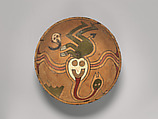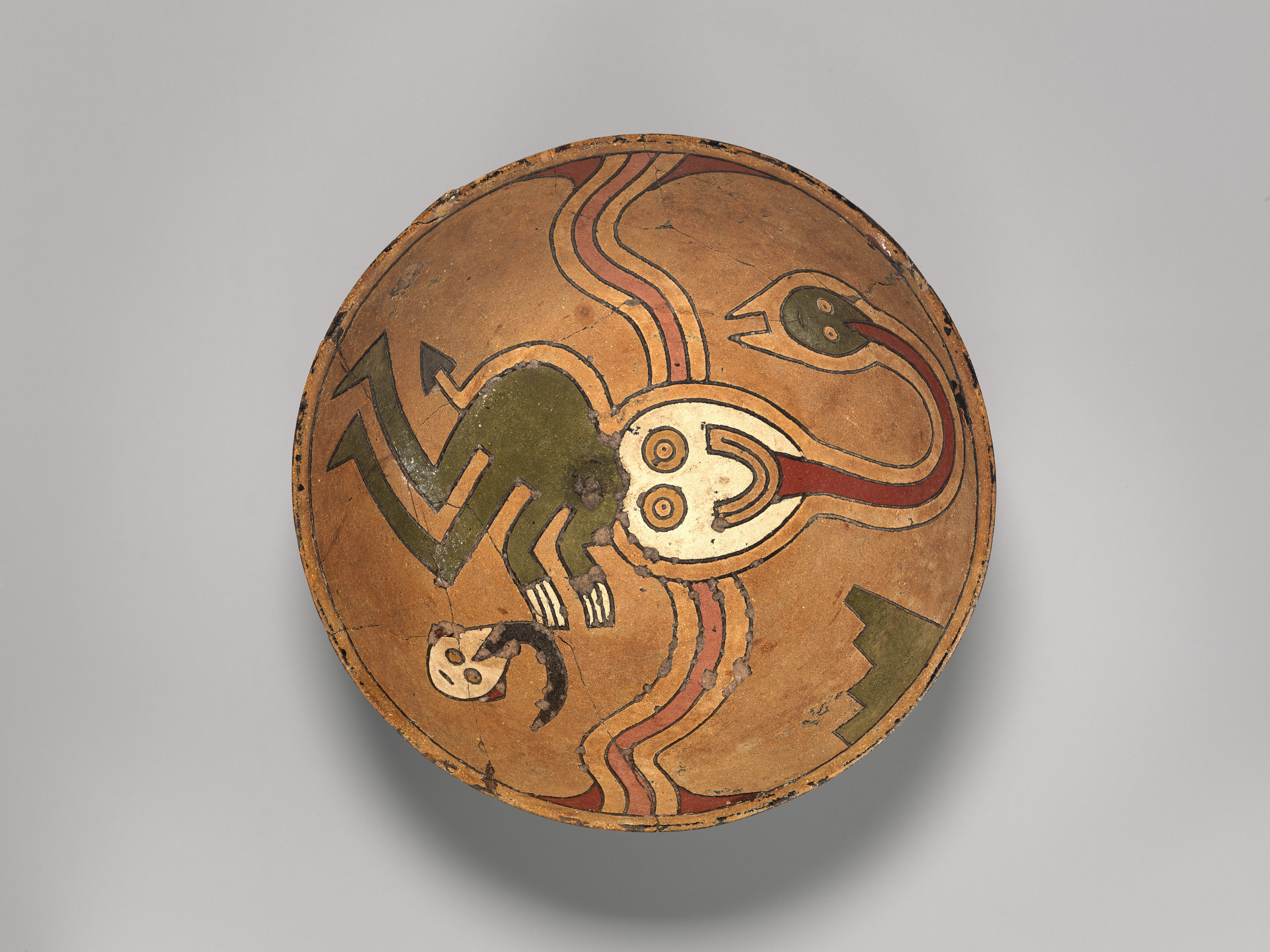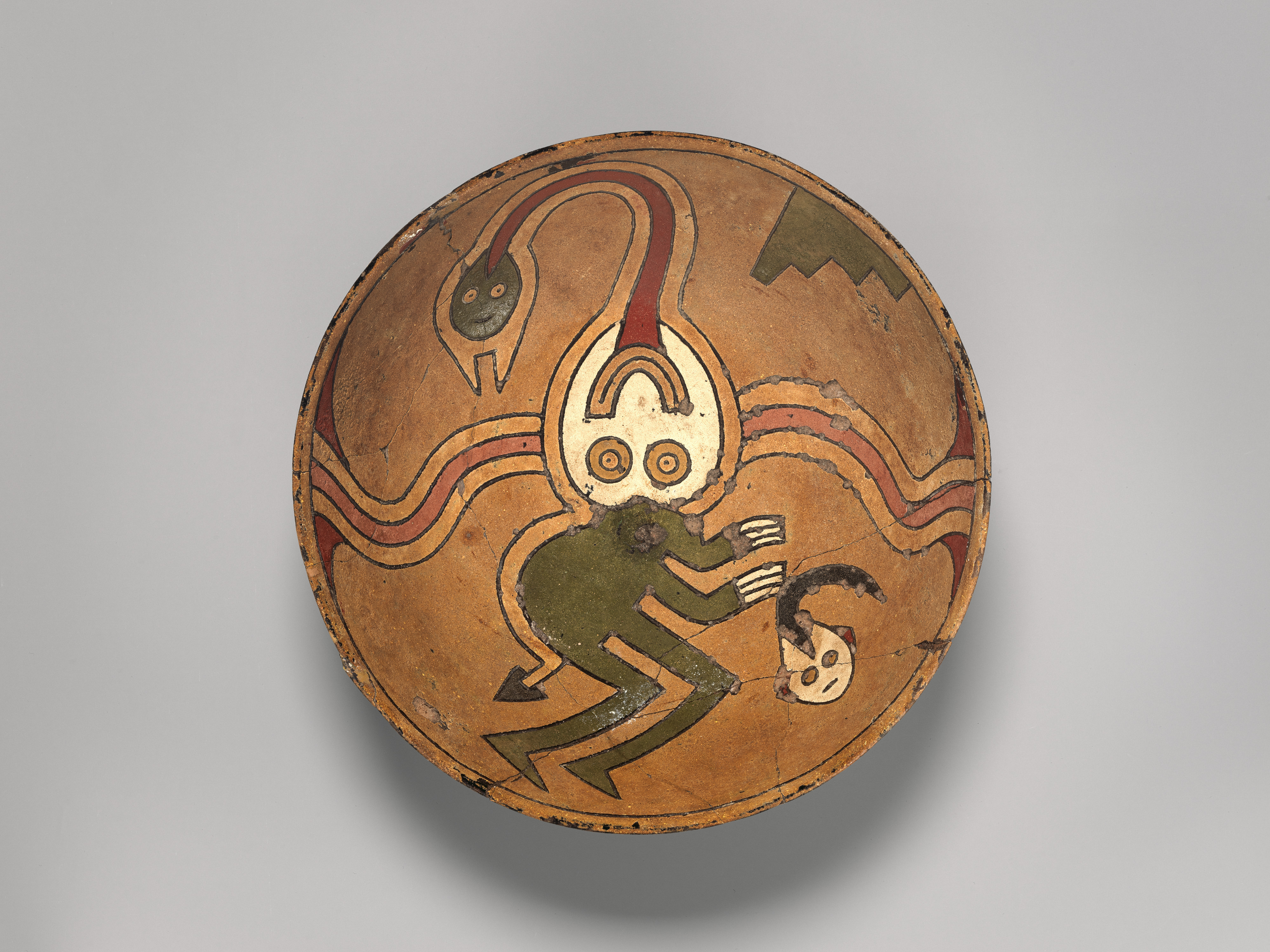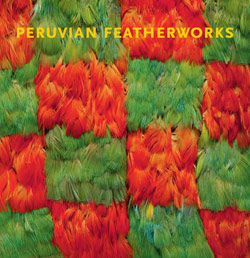Rattle bowl with flying figure (Oculate Being)
This bowl depicts the Oculate Being, a creature named for its oversized circular eyes, popular in the Ica region of the south coast of Peru during the last centuries B.C. The white oval head of the Oculate Being, painted in the middle of the vessel, is the central focus of the scene, its green body extending to one edge. A snakelike appendage, ending in another head, emerges from the mouth. A yellow band along the back of the body terminates in a tail with a triangular tip, recalling the shape of an obsidian knife. The Oculate Being holds a disembodied head whose hair tuft resembles the cords often passed through the frontal bone of skulls found in the Paracas region (sometimes called trophy heads, or curated heads). The outside of the bowl was painted red with a series of yellow felines, shown in profile and facing left.
Paracas-style ceramics are characterized by their vibrant and lustrous colors. Combining mostly mineral pigments with a binding agent, artists created paints that were applied on the surface of the pottery post firing (Kriss et al., 2018). At a time when most ceramics in the Central Andes were of muted colors, the Paracas palette was a significant innovation. Some designs in Paracas pottery derived from earlier traditions in the north, such as Cupisnique and Chavín, while others were specific to the Ica region, including the Oculate Being seen here (and on its twin, MMA 63.232.79). This figure was, very likely, the antecedent or inspiration of the flying figures found in the later Nasca style (Carmichael 2016).
If the bowl is rotated in the direction suggested by the profile felines on the outside, the Oculate Being appears in multiple poses. In one position, the Oculate Being appears to be standing on its feet, in a crouch that is half-human, half-cat. In this rampant position, with the head turned upward, the Oculate Being appears to look at a stepped motif painted on the opposite side of the bowl, perhaps a representation of an architectural feature. Once rotated ninety degrees clockwise, however, the Oculate Being seems to be floating or flying, as in other similar depictions (see MMA 63.232.97 and 1976.287.32). The undulating red line in the middle of the bowl resembles a river dividing the territory in two, with hilly terrain at its origin and end, perhaps a reference to the landscape, where the Ica River runs from north to south, unlike most coastal river valleys, which run east to west.
The base of the bowl contains a chamber filled with several fired-clay balls, allowing it to function as a rattle when shaken.
Hugo C. Ikehara-Tsukayama, Andrew W. Mellon Curatorial/Collection Specialist Fellow, Arts of the Ancient Americas, 2022
References and Further Reading
Carmichael, Patrick H. "Nasca Origins and Paracas Progenitors." Ñawpa Pacha, Journal of Andean Archaeology, vol. 36, no 2 (2016), pp. 53-94.
García, Rubén. "Puerto Nuevo y los orígenes de la tradición estilístico-religiosa Paracas." Boletín de Arqueología PUCP, no. 13 (2011), pp. 187-207.
Kriss, Dawn, et al. "A Material and Technical Study of Paracas Painted Ceramics." Antiquity 92, no. 366 (2018), pp. 1492-510.
Menzel, Dorothy, John H. Rowe and Lawrence E. Dawson. The Paracas Pottery of Ica: A Study in Style and Time. University of California Publications in American Archaeology and Ethnology, Vol. 50. Berkeley and Los Angeles: University of California Press, 1964
Due to rights restrictions, this image cannot be enlarged, viewed at full screen, or downloaded.
This artwork is meant to be viewed from right to left. Scroll left to view more.







